What Can Be Done for Hives?
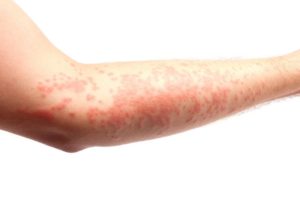 Hives (i.e., urticaria) are a fairly common occurrence which is usually very annoying to the individual who suffers from them. They are often called “welts” by the general public and “wheals” by allergists. Hives are itchy, red blotches on the skin that are usually raised. Some affected individuals may experience a burning sensation while others notice a stinging sensation. Hives, in some instances, may be flat and not raised. The size of an individual hive may range from very small to rather large. They can also coalesce with other hives to create giant “plaques” of hives. Hives can be various shapes and are usually not symmetrical. They often look like mosquito bites but without the actual bite. They can occur anywhere externally on the body (e.g., face, neck, extremities, back, abdomen) or be located internally (e.g., throat, intestines). When they are internal, symptoms such as swelling of the throat, abdominal pain, or diarrhea may ensue. When hives occur on the lips, tongue, eyes, or ears, it is not uncommon for the individual to notice only swelling of these body parts. This swelling is termed angioedema. Angioedema is essentially a hive that is in the deeper tissue layers. As a result, the lesion appears as a swelling, opposed to a hive. Either way, both are bothersome to the person who is afflicted with either or both of them.
Hives (i.e., urticaria) are a fairly common occurrence which is usually very annoying to the individual who suffers from them. They are often called “welts” by the general public and “wheals” by allergists. Hives are itchy, red blotches on the skin that are usually raised. Some affected individuals may experience a burning sensation while others notice a stinging sensation. Hives, in some instances, may be flat and not raised. The size of an individual hive may range from very small to rather large. They can also coalesce with other hives to create giant “plaques” of hives. Hives can be various shapes and are usually not symmetrical. They often look like mosquito bites but without the actual bite. They can occur anywhere externally on the body (e.g., face, neck, extremities, back, abdomen) or be located internally (e.g., throat, intestines). When they are internal, symptoms such as swelling of the throat, abdominal pain, or diarrhea may ensue. When hives occur on the lips, tongue, eyes, or ears, it is not uncommon for the individual to notice only swelling of these body parts. This swelling is termed angioedema. Angioedema is essentially a hive that is in the deeper tissue layers. As a result, the lesion appears as a swelling, opposed to a hive. Either way, both are bothersome to the person who is afflicted with either or both of them.
Hives are basically grouped into two main categories, although there are actually more than two. The first category is referred to as acute urticaria. Acute urticaria is a condition where the hives occur for 6 weeks or less. If hives linger on and persist for more than 6 weeks, they are called chronic urticaria. Some cases of hives may last for months and even years in a small percentage of patients. Approximately 25% of the general population in the U.S. develop hives at some point in their lives. Each episode of hives generally last less than 24 hours in duration but may last for days or weeks in certain circumstances.
The diagnosis of hives begins with a comprehensive history and physical examination by a board certified allergist such as the allergists at Black & Kletz Allergy. The workup for hives will vary depending on what was discovered in the history and physical examination in conjunction with how long the hives have been present. For many individuals, a medication allergy is to blame. For others, a food may be the culprit. For those who present with chronic urticarial (i.e., hives that have persisted for more than 6 weeks), bloodwork is generally needed in order to rule out a multitude of diseases and conditions that are known to cause hives. Despite all of the bloodwork done on a patient with chronic urticaria, approximately 95% of these individuals will have normal test results. If the workup is completely negative, the term idiopathic chronic urticaria is used as a diagnosis. This basically is a fancy way of saying that no identifiable cause was discovered to cause the hives of that individual. Some of the conditions that are known to be associated with chronic urticaria include thyroid disorders, autoimmune disorders (e.g., systemic lupus erythematosus, Sjögren’s syndrome, rheumatoid arthritis), hepatitis B, other infections, cancers, complement disorders, and physical elements (e.g., heat, cold, pressure, exercise, vibration), to name a few.
The treatment of hives can range from avoidance to using medications. Antihistamines are usually the first line of defense of most cases of hives. Beta-2 agonists such as Pepcid (famotidine) are often utilized to enhance the effect of the antihistamine when an antihistamine alone is not enough to prevent hives. Leukotriene antagonists [e.g. Singulair (montelukast)] are often added to the regimen is difficult-to-treat hives. In recalcitrant disease, oral corticosteroids may be used to bring the hives under control for a short time since the use of long-term steroids is not ideal because of the risks and many side effects that may develop. Xolair (omalizumab) injections are used for idiopathic chronic urticaria in patients where other therapy is unsuccessful. Xolair injections Xolair are very effective in the management of chronic hives.
The board certified allergists at Black & Kletz Allergy have had more than 50 years of experience in diagnosing and treating asthma in the Washington, DC, Northern Virginia, and Maryland metropolitan area. We treat both children and adults and have office locations in Washington, DC, McLean, VA (Tysons Corner, VA), and Manassas, VA. We offer on-site parking at all of our office locations. The Washington, DC and McLean, VA offices are also Metro accessible. We offer a free shuttle that runs between our McLean, VA office and the Spring Hill metro station on the silver line. To schedule an appointment, please call one of our offices or alternatively you may click Request an Appointment and we will respond within 24 hours by the next business day. The allergy doctors at Black & Kletz Allergy are happy to help you diagnose and treat your asthma as well as any other allergy-related or immunological condition that you might have.

 Why do we cough? Coughing is a natural defense mechanism to expel excessive mucus, microbes, and irritant substances from our airways which acts to protect our lungs from the potential damage caused by them. Coughing, however, can also be a bothersome symptom and is one of the most common reasons why patients consult their doctors.
Why do we cough? Coughing is a natural defense mechanism to expel excessive mucus, microbes, and irritant substances from our airways which acts to protect our lungs from the potential damage caused by them. Coughing, however, can also be a bothersome symptom and is one of the most common reasons why patients consult their doctors. Historically, March is the month that many trees begin pollinating in the Washington, DC metropolitan area. This year, trees have begun to pollinate in February, as the temperatures in the metro area have been higher than normal for a typical Winter. We will begin to see tree pollen marked by a yellowish coating on our automobiles soon. For many allergic individuals, this represents a tumultuous time for those who are sensitized to tree pollen. Birch, cedar, ash, oak, elm, cottonwood, hickory, and maple are the predominant trees producing pollen in our area during the Spring. This time of the year is the reproductive season for the trees. As a result, the tree pollen grains are released into the atmosphere in order to fertilize the ovules of other trees. This process is called pollination. Pollen is produced and then dispersed by the wind throughout the day, however, the tree pollen counts are highest during the morning hours.
Historically, March is the month that many trees begin pollinating in the Washington, DC metropolitan area. This year, trees have begun to pollinate in February, as the temperatures in the metro area have been higher than normal for a typical Winter. We will begin to see tree pollen marked by a yellowish coating on our automobiles soon. For many allergic individuals, this represents a tumultuous time for those who are sensitized to tree pollen. Birch, cedar, ash, oak, elm, cottonwood, hickory, and maple are the predominant trees producing pollen in our area during the Spring. This time of the year is the reproductive season for the trees. As a result, the tree pollen grains are released into the atmosphere in order to fertilize the ovules of other trees. This process is called pollination. Pollen is produced and then dispersed by the wind throughout the day, however, the tree pollen counts are highest during the morning hours.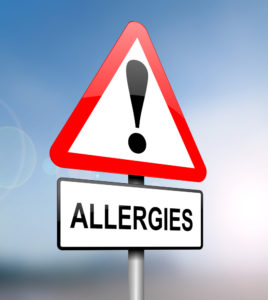
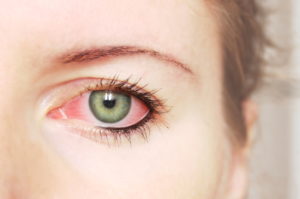 Keratoconjunctivitis is term used to describe inflammation of the cornea and conjunctiva. Keratitis specifically is the inflammation of the cornea (i.e., the transparent dome that covers the pupil and the iris of the eye). Conjunctivitis, on the other hand, is the inflammation of the conjunctiva [i.e., the thin membrane covering the sclera (i.e., the white of the eye) as well as the lining of the inner part of the eyelids]. It is more commonly referred to as “pink eye.” Keratoconjunctivitis is one of the most common causes of red and irritated eyes as millions of individuals visit doctors for this condition every year.
Keratoconjunctivitis is term used to describe inflammation of the cornea and conjunctiva. Keratitis specifically is the inflammation of the cornea (i.e., the transparent dome that covers the pupil and the iris of the eye). Conjunctivitis, on the other hand, is the inflammation of the conjunctiva [i.e., the thin membrane covering the sclera (i.e., the white of the eye) as well as the lining of the inner part of the eyelids]. It is more commonly referred to as “pink eye.” Keratoconjunctivitis is one of the most common causes of red and irritated eyes as millions of individuals visit doctors for this condition every year.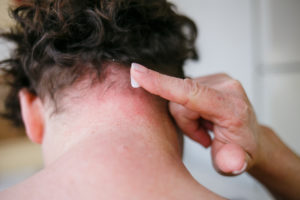 What are some of the causes?
What are some of the causes? Twenty percent of the U.S population have cat allergies and 10% of the population have dog allergies. In the U.S., the most common pet are dogs, which are followed by cats as the second most common pet. Approximately 70% of homes having at least one pet. This is a higher percentage of homes with pets than in the past as more and more families are acquiring pets. In addition to cats and dogs, some other common pets include birds (e.g., parakeets, parrots), fish, rabbits, rodents (e.g., guinea pigs, hamsters, gerbils, chinchillas, rats, mice) reptiles (e.g., snakes, lizards, turtles, geckos), hermit crabs, ferrets, horses, and spiders. Horses normally do not live in people’s homes, but they may be rather allergenic. In recent years, there is a fad of owning miniature horses which in some cases do live in their owner’s house. This is probably not a good idea in general, but for those who are allergic to horses, it is especially unwise.
Twenty percent of the U.S population have cat allergies and 10% of the population have dog allergies. In the U.S., the most common pet are dogs, which are followed by cats as the second most common pet. Approximately 70% of homes having at least one pet. This is a higher percentage of homes with pets than in the past as more and more families are acquiring pets. In addition to cats and dogs, some other common pets include birds (e.g., parakeets, parrots), fish, rabbits, rodents (e.g., guinea pigs, hamsters, gerbils, chinchillas, rats, mice) reptiles (e.g., snakes, lizards, turtles, geckos), hermit crabs, ferrets, horses, and spiders. Horses normally do not live in people’s homes, but they may be rather allergenic. In recent years, there is a fad of owning miniature horses which in some cases do live in their owner’s house. This is probably not a good idea in general, but for those who are allergic to horses, it is especially unwise.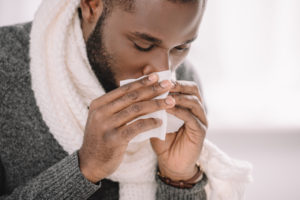 As we are in the Fall season and approaching Winter, many individuals may experience a clear runny nose, post-nasal drip, sneezing, sore throat, nasal congestion, sinus pressure, headache, coughing, and/or fatigue. The question to many becomes, “Do I have a common cold or do I have Fall/Winter allergies? It is a common question to an even more common complaint. How does someone know if they are having allergies rather than the common cold? Well, if someone does not have a history of
As we are in the Fall season and approaching Winter, many individuals may experience a clear runny nose, post-nasal drip, sneezing, sore throat, nasal congestion, sinus pressure, headache, coughing, and/or fatigue. The question to many becomes, “Do I have a common cold or do I have Fall/Winter allergies? It is a common question to an even more common complaint. How does someone know if they are having allergies rather than the common cold? Well, if someone does not have a history of